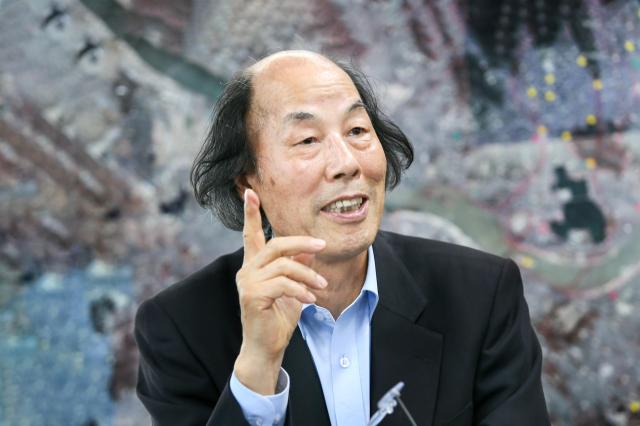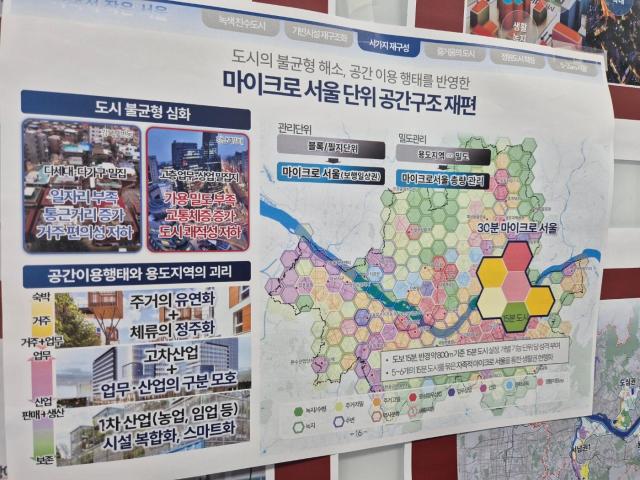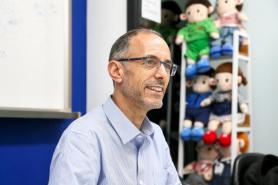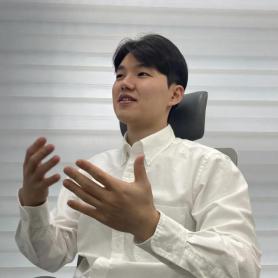
The key aspects of the plans in the offing focus on enhancing accessibility and connectivity within the city to improve the overall quality of life for residents, according to Kang Byoung-keun, a professor emeritus at Konkuk University, who has been involved in Seoul's major development projects as a chief planner and architect since 2021.
In an exclusive interview with AJP earlier this month, Kang emphasized the importance of creating spaces that provide a mix of activities to enhance livability for city dwellers, commuters, and visitors alike, allowing them to do everything within a walking distance.
"How is that possible? Imagine a building where people live in upper-floor apartments, commute to offices on the middle levels, and unwind at entertainment bars and lounges on the ground floors," Kang explained.
According to him, such a city life forms a "vertical community where people do not need to drive" as it integrates home, work, and leisure into a single space. As he puts it, one fixes all.

In this sense, his concept of a walkable city envisions a space where all essential services and resources are accessible within a 30-minute walk or less for residents, and such walkability can be facilitated by constructing multi-use skyscrapers and high-rise towers, which allow the city to expand vertically.

Contrary to the common wisdom that cities filled with high-rise buildings lead to greater social isolation, Kang claimed that these vertical urban landscapes actually open up more room for horizontal spaces and pedestrian-friendly environments, which can enhance connectivity and interactions among people.
"When people walk more, they naturally engage in more conversations, catching up on things like 'Where are you going?' or 'What did you have for lunch?' These small talks definitely help people understand each other better," he said.
His ideas are not limited to building structures but also extend to green spaces. The scruffy urban clusters of Seoul, home to over 9 million residents, often lack sufficient areas for gardens and parks, but this would no longer be an issue if they are created on rooftops and other parts of multi-use buildings.
The enthusiastic architect expressed his excitement about turning his vision into reality sooner or later through the city's grand development projects announced by Mayor Oh Se-hoon in February of this year. "Oh is set to unveil a more comprehensive blueprint for transforming Seoul with detailed plans, which will include about 37 new walking zones," Kang hinted.
"Each zone will undergo its own unique transformation while preserving its distinctive characteristics. For example, Seongsu-dong in eastern Seoul, once an industrial area still full of auto-repair shops and factories, is rapidly evolving into a trendy hub as entertainment, IT, and gaming companies moved their headquarters there a few years ago. Meanwhile, Yongsan and its nearby Yeouido will solidify their prominence as commercial districts," he elaborated.
In particular, Yongsan, once an old railway depot just north of the Han River, is poised to become the capital's first district to be spruced up with Kang's concept of walkability. Its location, with an ample area spanning 500,000 square meters, as a business hub combined with residential neighborhoods makes it an ideal candidate for such a transformation.
With a doctorate from the Technical University of Berlin, Kang is an expert in urban planning with over 30 years of experience. He was also a pioneer in creating spaces that accommodate people with physical disabilities in Korea.
While wrapping up the interview, Kang reiterated that shorter travel distances for work and other activities ensure a better quality of life by boosting productivity, reducing stress, and allowing them to maintain a balance between work and play. "Once all these projects are completed as planned, I'm confident that Seoulites will be surely proud of living here, just as New Yorkers and Parisians feel about their respective historical cities.
Copyright ⓒ Aju Press All rights reserved.



